Storyteller
About the Storyteller
Historically, clay figures have been present in the Pueblo pottery tradition for more than a thousand years. However, figures and effigies were denounced as "works of the devil" by the Spanish missionaries in New Mexico between 1540 and 1820. Before and after that time the art of making figurative sculpture flourished, especially at Cochiti Pueblo. At Cochiti, the forms of animals, birds, caricatures of outsiders and, more recently, images of mothers and grandfathers telling stories and singing to children have multiplied.
The "storyteller" is an important role in the tribes as parents are often too busy working and raising kids to pass on their tribal histories. The Native American people did not develop a written language to record anything for posterity. Some tribes still refuse to create one. The closest thing they had to a written language was recorded on pottery and textiles, in the form of painted designs that decorate that pottery and textiles.
The storyteller's role was to preserve and retell and pass down the oral history of his people in their native language. In most tribes that role was fulfilled by elder men.
The first recorded storyteller figure was created in 1964 by Cochiti Pueblo potter Helen Cordero in memory of her grandfather, Santiago Quintana. She gathered her clay from a secret sacred place on the lands of her pueblo. Then she hand-coiled, hand painted and fired that first storyteller figure the traditional way: in the ground. Helen never used any molds or kilns to make her pottery.
Helen's creation immediately struck a chord throughout all the pueblos as the storyteller is a figure central to all their societies. Most tribes also have the figure of the Singing Maiden in their pantheon and in many cases, the mix of Singing Maiden and Storyteller has blurred some lines in the pottery world.
Today, as many as three hundred potters in thirteen pueblos have created storytellers. Their storytellers are not only men and women but also Santa’s, mudheads, koshares, bears, owls, eagles and other animals, sometimes encumbered with children numbering more than one hundred! Each potter has also customized their storyteller figures to more closely reflect the styles and dress of their own tribes, often even of their own clans.
Showing 1–12 of 34 results
-

Aggie Henderson, jhac3b021, Storyteller with five children
$175.00 Add to cart -

Chrislyn Fragua, zzje3a170m1, Polychrome reclining storyteller with three children
$325.00 Add to cart -

Chrislyn Fragua, zzje3a170m2, Polychrome storyteller with four children
$325.00 Add to cart -
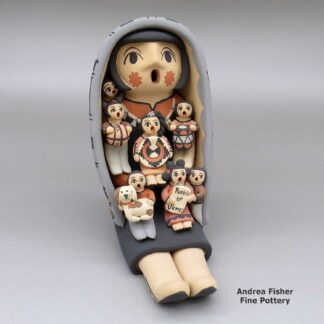
Chrislyn Fragua, zzje3a171, Polychrome storyteller with seven children
$650.00 Add to cart -
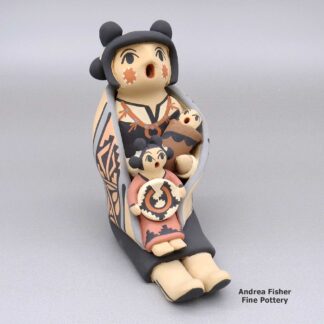
Chrislyn Fragua, zzje3a172, Polychrome storyteller with two children
$275.00 Add to cart -
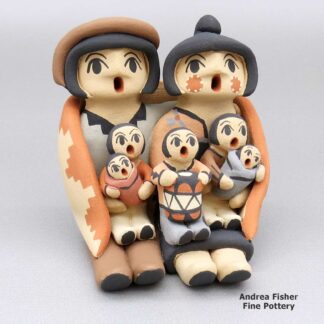
Chrislyn Fragua, zzje3a173, Family storyteller with 2 grandparents and 5 grandchildren
$250.00 Add to cart -

Chrislyn Fragua, zzje3a174m1, Polychrome storyteller with one child
$125.00 Add to cart -

Chrislyn Fragua, zzje3a174m2, Polychrome storyteller with two children
$125.00 Add to cart -
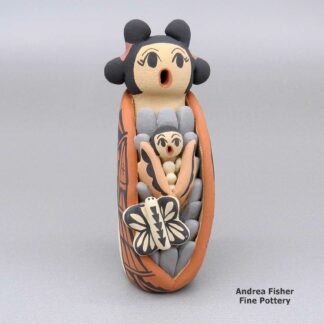
Chrislyn Fragua, zzje3a174m3, Polychrome corn maiden storyteller with one child
$125.00 Add to cart -

Dorothy Herrera, lcco3b101, Bear storyteller with a cub and a fish
$350.00 Add to cart -
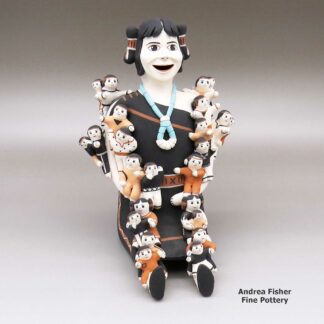
Esther Suina, thco3b019, Storyteller with twenty-four children
$950.00 Add to cart -

Felicia Fragua, zzje2m220m4, Polychrome storyteller with four children
$215.00 Add to cart
Showing 1–12 of 34 results